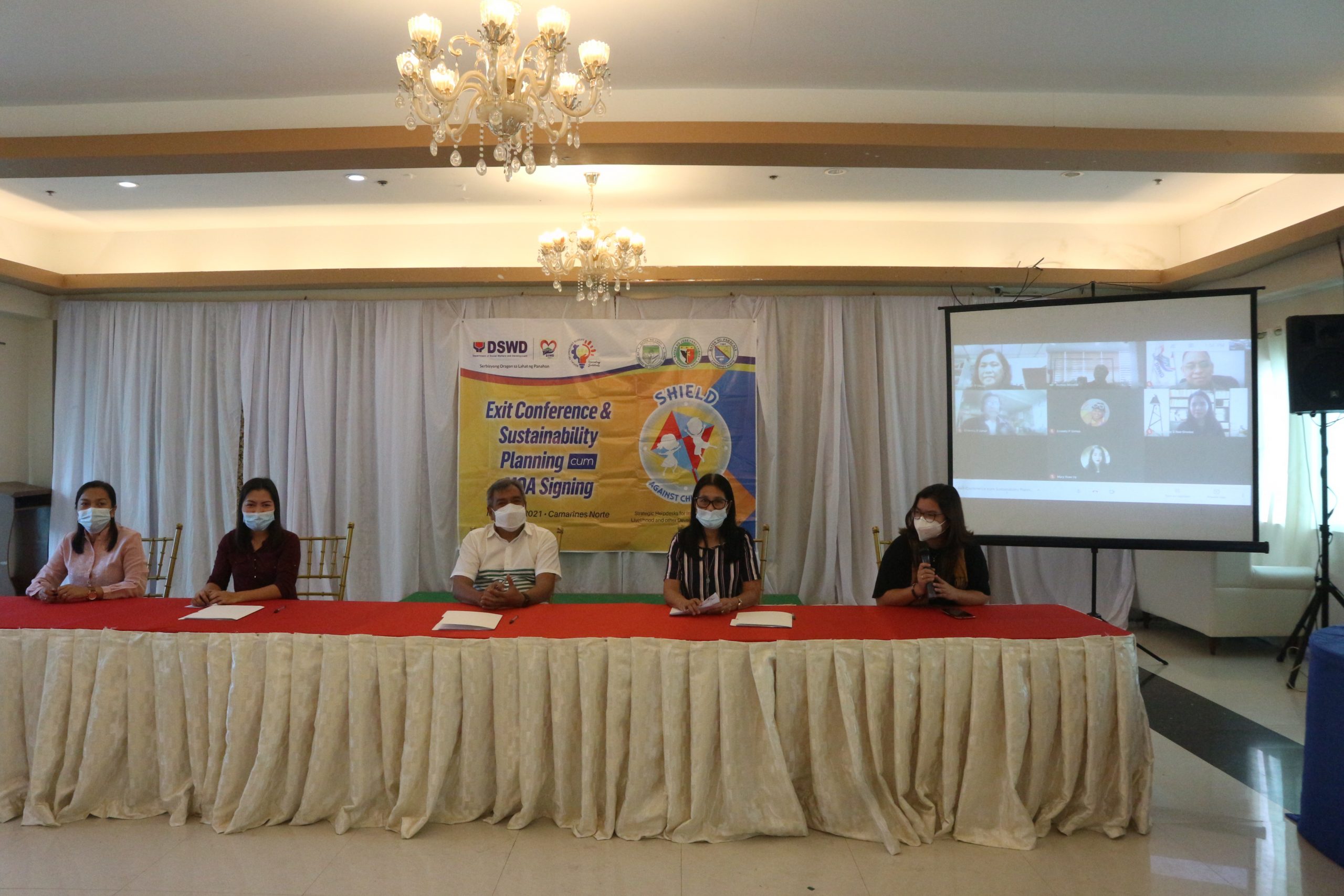
The Social Technology Unit, together with the Social Technology Bureau, conducted the Exit Conference and Sustainability Planning cum MOA Signing of SHIELD (Strategic Helpdesks for Information, Education, Livelihood and other Developmental Interventions) in Daet, Camarines Norte last 17 March 2021. This event marks the pilot implementation of SHIELD Project Against Child Labor in the Municipalities of Labo, Paracale and Jose Panganiban in Camarines Norte where child labor is prominent. The Local Government Units shared their commitments in support of the SHIELD project to end child labor in their corresponding municipalities.
Child Labor
As stipulated under Republic Act No. 9231 otherwise known as the Anti-Child Labor Law of 2003, child labor (WFCL) is prohibited in the Philippines. This law provides for the elimination of the worst forms of child labor and afford stronger protection for the working child. Despite the passage of this law, child labor continues. The 2011 Survey on Children conducted by Philippine Statistics Authority (PSA) revealed that there are 3.3 million working children aged 5-17 years old, of which 2.1 million are in child labor. The study further yielded that for every five children in hazardous labor, two were exposed to physical hazards (39.9 percent) and one was exposed to both chemical and physical hazards. “Child labor” in this survey refers to the working children who reported to have worked in hazardous environment regardless of the number of hours they spent at work, or those who have worked for long hours (more than 20 hours a week for children 5 to 14 years old and more than 40 hours a week for children 15 to 17 years old).
The study on the worst forms of child labor conducted by DSWD Social Technology Bureau showed that poverty is the main reason for allowing children to engage in hazardous work. The study further yielded that educational assistance, amongst other support services, remains to be the utmost need of the respondents. The child laborers and their families still believe that education is their key to get out from the vicious and inter-generational cycle of poverty and child labor practice. However, based on the result of the research, child laborers and their parents perceive that the programs and services at the ground are inadequate.
SHIELD Project
SHIELD Project that was started in June 2017, focuses on strengthening efforts at the local level including establishment of a help desk and a local registry on child labor wherein referral mechanisms and convergence of support services are embedded. Alongside these mechanisms are advocacy and capacity building activities to increase awareness and capacities of the clientele group and the duty-bearers to enable them to provide appropriate and immediate intervention to child laborers and their families. The project has three components: (1) Child Labor Local Registry – to respond to the scarcity of data on child labor at the ground and serve as a tool in identifying child laborer in the community / barangay; (2) Barangay Helpdesks on Child Labor – this is where the convergence of support services for child laborers and their families will be readily facilitated to ensure immediate and accessible developmental intervention at the ground; and (3) Organizing, Advocacy and Capacity-Building for child laborers, families, volunteers and service providers to influence local officials and other stakeholders to ensure maximum result of the project.
